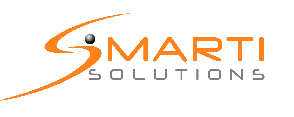PowerPoint is one of the most poorly utilized presentation tools in a marketer’s arsenal. I’m always amazed how differences in content, delivery and style can make or break a presentation and affect the energy level in the room. A face-to-face meeting presents an opportunity to engage and connect. So why do so many presenters miss the point?
I was recently watched an agency leader present a PowerPoint laden with heavy text and data-driven charts in a tiny font– virtually impossible to see from the back of the room. Staring at the screen in the front of the room, the presenter was commenting, “it is so obvious; the data speaks for itself.” (No, it didn’t.) No one had any idea what he was talking about, and he lost points.
PowerPoint is often used as a stand-alone document to serve as a leave-behind for review afterward. It’s not meant for that purpose. If the presentation stands alone so well, then why do you need to present it? Send an email. A better leave-behind is a company brochure, printed case studies and team bios, which are all easier to replicate.
Slides are meant to be talking points, an aid or “cue card” for the presenter, and a method to point out the main takeaway for the audience.
So, if that’s the point, why do so many presenters treat the meeting like a read-along? Your audience can read too, and doesn’t need you to do it for them. Important commentary will be tuned out. If tasked with reading, they are not listening, because visual cues take priority. It’s the same reason why it’s not wise to hand your audience the presentation in advance; there’s a natural temptation to flip through and read ahead. Your goal is to captivate and hold your audience’s attention.
It’s best to limit text to a handful of words—as much as you can read in less than 5 seconds. This way, your audience’s attention will remain focused on you. Use the slides for pictures, screen shots, dramatic graphs that highlight what’s being said. Use text sparingly and you’ll see how much better you can get your point across.
Pump up your presentation skills. Your best asset in giving a presentation is YOU. Granted, some people have more charisma are just better presenters than others. Learn how to present, connect with your audience and hold their attention. But best practices and techniques can be trained; I’ve helped many people develop and deliver presentations with pizzazz.
The goal of the meeting is to get your audience interested and excited to take the next step. If achieved, they will ask for a follow-up meeting, proposal or an agreement to move forward. The purpose of PowerPoint is to get to that point.
Subscribe to:
Post Comments (Atom)



No comments:
Post a Comment